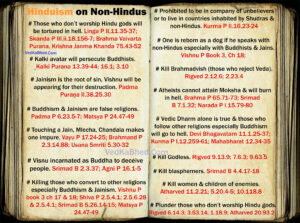


10) gave a partial German translation of Atharva-veda verses 10.8.37, 13.1.6, and 2.1.5, all of which speak of an extended or stretched thread (German “Faden”). These Atharva-veda parallels were noticed already by Lucian Scherman in his 1887 book, Philosophische Hymnen aus der Rig- und Atharva-Veda-Sanhitâ. Here we have not only a stretched out thread or cord, but even the ideas around it are parallel. In Atharva-veda 13.1.6 the supreme parameṣṭhin stretched out (tatāna) the tantu, the “thread/cord,” after rohita gave birth to heaven and earth. This phrase is directly parallel to the phrase here in Ṛg-veda 10.129.5, vitato raśmi (“extended cord”), and would incline us to take raśmi as a cord rather than as a ray. In Atharva-veda 10.8.37-38 the phrase sūtram vitatam, “extended/stretched thread,” (in which created beings are woven) occurs twice. I have accepted “cord” because of parallels to two Atharva-veda hymns among the small number that pertain to this subject matter. The two Sāyaṇa commentaries accept “ray,” while most translators accept “cord” (Veṅkaṭa-Mādhava does not gloss it). RV 10.129.5a: tiraścí̄no vítato raśmír eṣām, “Their cord was extended across.” The word raśmi can mean “cord, string, rope,” or it can mean “ray,” as in a ray of light. RV 10.129.5: This verse is repeated in the “white” or Śukla Yajur-veda, i.e., the Vājasaneyi-saṃhitā, in both the Mādhyandina recension at 33.74, and in the Kāṇva recension at 32.6.5 (or 32.74). Part 2: Translation of Ṛg-veda 10.129, the “Hymn of Creation” Eastern Tradition Research Institute (David & Nancy Reigle).

Dewald Bester on “dharmakāya ceased” part 2.Dewald Bester on Creation Stories: The Cosmogony Account from the Abhidharmakośa.


 0 kommentar(er)
0 kommentar(er)
